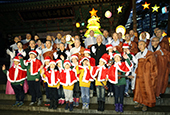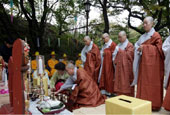- 한국어
- English
- 日本語
- 中文
- العربية
- Español
- Français
- Deutsch
- Pусский
- Tiếng Việt
- Indonesian
Last Saturday was a rainy day with a grey sky all day long. As a Belgian I`m used to see this grey sky very often in Europe and not only during winter!
In Korea we are lucky to have blue sky and sun almost every day. So on this rainy day I was thinking what comes to my mind first when thinking about `grey`? Well my first thoughts go to the grey colored clothes worn by Korean bikkhu (비구) and bikkhuni (비구니), buddhist monks and nuns.
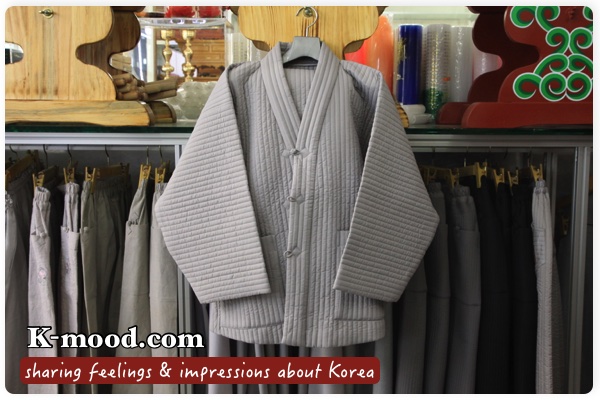
It was on my second trip to Korea, in spring 2000, that I came in touch with Korean Buddhism. On a trip to Kyongju (Gyeongju, 경주) we stopped by in Daegu (대구) to visit a friend who is a monk and a professor in acupuncture. He took us to Haeinsa (해인사), one of the Three Jewel temples in Korea which is also recognized as UNESCO’s World Heritage. It became a wonderful experience waking up my sleeping interest in Buddhism. Years later I have been visiting temples all over Korea.
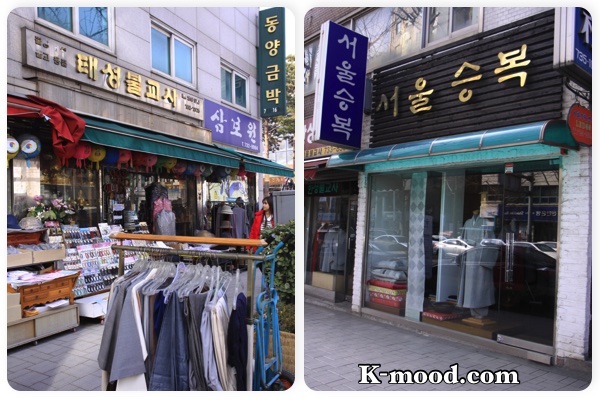
Korean Buddhism distinghuishes itself from other forms of Buddhism in that way that Buddhism has blended with Shamanism, the oldest religion in Korea. Also the color of the clothes are different from Buddhist monks and nuns in other countries, as in India and Tibet where the main color is orange.
To get a better insight in the monks clothes we went to visit a store in Seoul near JOGYE temple, (조계사) the headquarter temple of the Jogye order, the main Buddhist order in Korea. If you are interested in Buddhism then you might like this place. The easiest way to get there is by subway line nr 1 and get of at Jeonggak Station (종각). From here it takes only a 250 meters walk to get there.
There are at least 20 stores selling all kind of Buddhist related items or souvenirs, from small to really big Buddha statues, candles, bracelets, calendars, books etc. And if you plan to take part at a templestay program you can find all information at the Templestay center in front of Jogye temple.
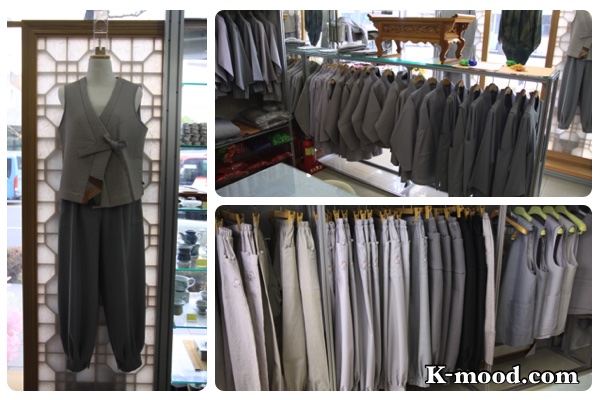
In order to find out more about Korean monks clothes we went in to one of the stores near Jogye temple. The owner was very surprised to see a foreigner entering his store, but he was very kind to give us detailed information.
He informed us that seungbok (승복) is the general name for monks` clothes in Korea. The clothing style of Korean monks differs from the clothes used by monks in other countries. In India they only use a kayasa, a long brownish robe or gasa (가사) in Korean, on top of their pants. Since Korea is a lot colder, Korean monks have to wear a changsam (장삼) underneath.
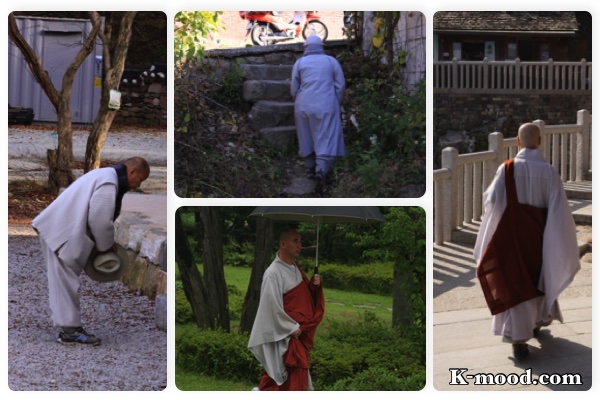
The design of the changsam (장삼)is mainly based on the traditional Korean hanbok, made one size bigger everywhere. Sleeves and waist are very wide. The daily used clothes consist of baggy pants called paji (바지), and a short working jacket or choksam (적삼).
According Buddhism rules monks shouldn`t posses anything and they should`t have any kind of attachment. For this reason seungbok were made of small left over pieces from older monks who passed away. Bright colors were not allowed so only `not pretty colors` like grey and brown are used.
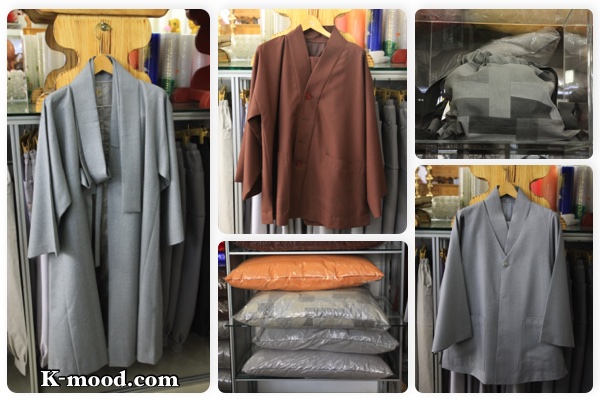
The main used color for the seungbok (승복) is a light grey, however a novice in the temple will get a brownish colored paji (바지), and a short working jacket or choksam (적삼).
The type of seungbok (승복) depends also on the rank of the monk. Low ranked monks or high ranked monks wear different clothing. There`s also a dresscode for the monks, depending on their rank and their duties. The good thing is that they don`t have to worry about what clothes to wear!
The quality of the seungbok (승복) depends on the season. Monks normally have summer and winter seungbok (승복). In hot and humid summer they often wear linen clothes standing out from the body, allowing the skin to breathe. In wintertime they wear cotton-wool padded winter clothes as protection against the wind and the dry cold. A matching shawl and cap come in the same grey color.
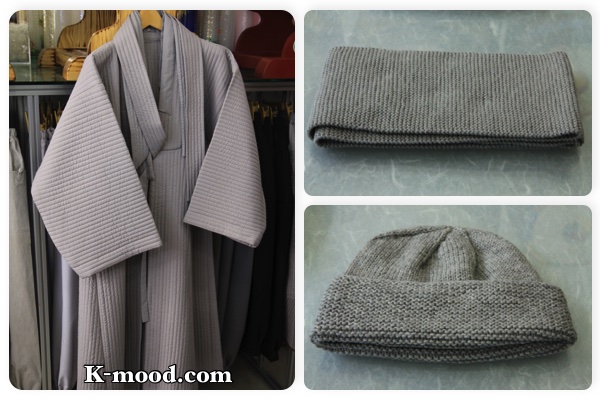
A seungbok (승복) these days can be quite expensive. They are normally provided or bought from donations. Since seungbok (승복) are very wide they can be used by male and female monks. Female monks are allowed to have 5 seungbok while male monks can have only 3. It is said that some monks still wear a more than 30 years old seungbok.
Some years ago I bought a set of some monks` clothes that I normally wear as soon as I get home. I have to admit that no clothes give me a more comfortable feeling when I`m at home.
By Guy Kusters for the Korea Blog
